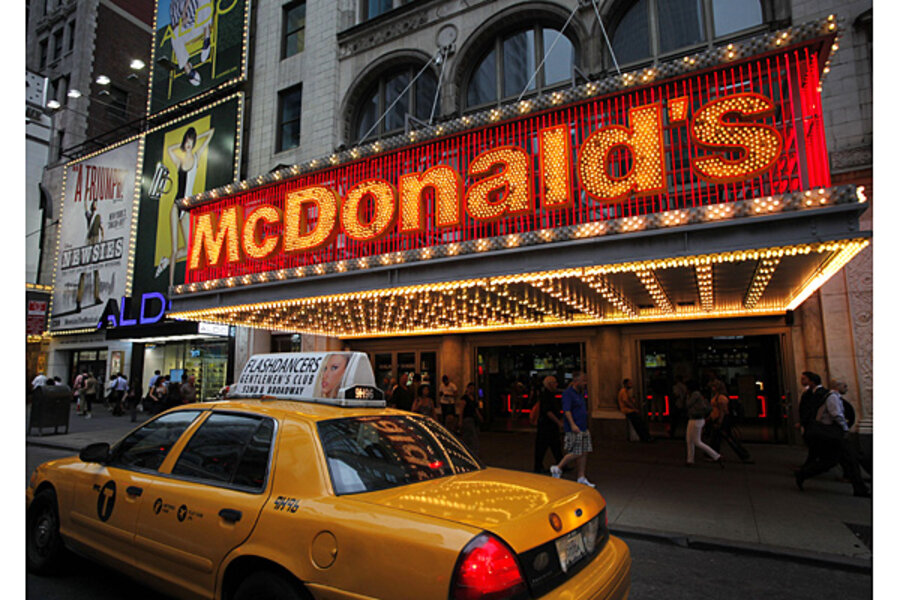McDonald's spent more than $988 million on advertising in 2013
Loading...
For the third consecutive year, restaurant advertising spending increased sharply more than total U.S. ad spending (see chart). Restaurants spent $6.449 billion on measured media (TV, magazines, newspapers, Internet display ads, radio, outdoor boards and free-standing inserts), a 5.2% increase over 2012 spending, according to data from Kantar Media.
Significantly, that 5.2% is significantly greater than last year’s 2.9% increase in ad spending by the restaurant category’s largest single advertiser, McDonald’s Corp. The $988 million it spent accounted for 15.3% of total 2013 restaurant advertising dollars.
Total U.S. ad spending rose just 0.9% to $140.2 billion last year. The lack of Olympic and political spending during the year limited growth, Kantar reported. It noted that the largest 1,000 advertisers as a group are spending more while smaller companies sharply cut back spending last year.
Total ad spending during 2013’s Q4 was positive (+1.6%) during what was a very volatile year. Total ad spending declined 0.1% in Q1, jumped up 3.5% in Q2 and then fell 1.9% in Q3. Restaurant ad spending had declined 3.6% in Q3, falling farther than overall spending, before bouncing back in Q4.
Although restaurants spent roughly $17.7 million on advertising per day in 2013, the category ranked 8th among advertisers. And its 5.2% increase was not the largest. Ad spending in the telecom category was up 8.2% in 2013; the insurance category was up 8.1%. The largest decline was the 11.4% drop by direct-response companies. Ad spending also declined (-4.1%) in the financial services category.
Among media, the largest gain in spending was in Internet display ads (15.7%) while network radio showed the largest decline (-15.9%). Spending on cable TV was up 7.3%; spending on network and spot TV was down. Newspapers continued to slide, down 3.7% for the year.
McDonald’s $988 million in 2013 advertising –or $2.7 million a day–compares with $960 million spent in 2012, according Kantar Media data. McDonald’s remains by far the category’s biggest spender. It helped increase Q4 restaurant spending with heavy lobbying for its Dollar Menu & More.
Other Q4 restaurant advertising highlights were Wendy’s backing of its Pretzel Pub Chicken and Bacon Portabella Melt on Brioche burgers; Burger King’s introduction of Satisfries and its Big King; Carl’s Jr./Hardee’s promotion of freshly baked buns for premium burgers; Jack in the Box’s tandem introductions of its Jalapeňo BBQ Burger and Fajita Ranch Melt sandwiches; and Sonic’s Island Fire Spicy Chicken line.








